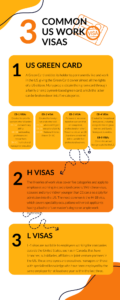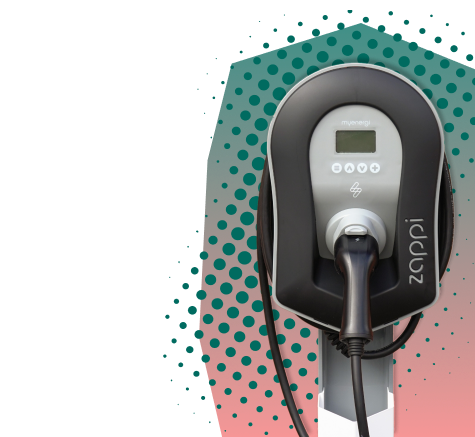Understanding US Work Visas
Are you considering growing your talent pool by looking outside of the US? You’re not alone. With the United States being GreenTech’s biggest market and home to the majority of high-value GreenTech firms, including 91 unicorns, much of this sustained growth has been driven by talent that is both rooted organically and from immigrants.
For foreign nationals who wish to work permanently or temporarily in the US, a work visa needs to be obtained. There are several types of work visas available, including green cards, temporary work visas, seasonal work visas, and exchange worker visas.
Each visa has certain criteria that immigrants have to meet to become eligible, for example, the nature of the work they will perform, whether an employer-relationship is established, the duration of employment, what degree of skill it takes to perform the job, and in some cases, their country of origin. The guidelines for acquiring approval to work in the United States vary depending on the type of visa and its eligibility requirements.
This article will cover everything you need to know about navigating the complex perception of US work visas, from the types that can be obtained, the benefits they provide the US and what you need to do to hire foreign nationals.
The Types Of US Work Visas
Before visiting, working, or immigrating to the US, a foreign national must obtain a US visa. All available visas offer entry to the States, and depending on what visa is obtained, it can grant authorization for employment.
The country’s most popular non-immigrant visa is the H-1B visa program, permitting businesses to hire foreign workers for specialized positions that can be difficult to fill. It has benefited the tech industry immensely, using it to also fill gaps in their workforce. Its flexibility, portability and relatively low requirements make it hugely favourable to foreign candidates, even allowing them to pursue green cards for permanent residency.

How The Visa Process Works
If your new hire needs to obtain visa status, there are various processes to follow. Taking the H-1B visa as an example, two main components are required by you as the employer; sponsorship and submission of an approved Labor Condition Application (LCA) to the Department of Labor (DOL). This form attests that you will pay the foreign national the same wage as other similarly skilled workers in the same region and that working conditions will not affect other employees.
Once the LCA has been certified by the DOL, you will then have to complete Form I-129, Petition for a Non-immigrant Worker and file both the LCA and the I-129 to USCIS, along with any fees and additional documentation. When Form I-129 is approved, your new hire can begin employment, depending on whether they are in the US. If they are on a different visa category, they must wait until the H-1B visa status becomes active in order to start work, whereas if they are outside of the US, they will need to apply for consular processing.
In some cases, your new hire may already have a visa status and therefore need to transfer their visa. To do this, you will need to submit an H-1B visa transfer petition with the USCIS. The transfer process is as follows:
- The new employer must petition for the transfer by filing an I-129, Petition for a Non-immigrant Worker, before the current employment period ends
- Pay H-1b transfer fees
- The new employer and the visa holder must submit specific documents that the USCIS requires
- The new employer must file for premium processing if the visa holder stopped working for the original employer before the transfer
- The visa holder can start working for the new employer once the USCIS approves the transfer
Typically, the H-1B transfer process can take between 4 to 16 weeks, and cost a minimum of $1,710.
The L-1 visa, which is an employment-based visa that allows organizations to transfer their professional employees from any of their overseas branches to those in the United States, follows a slightly different process:
- Step 1: Just like every employment-based visa category, the L-1 visa application process must be sponsored by you as the employer, filing an I-129 at least 45 days before your hire’s start date and no more than 6 months before their employment begins.
- Step 2: Once the I-129 has been approved, a DS-160 will need to be filed and submitted if your hire is outside of the US.
- Step 3: Your hire will need to meet with the US consulate or embassy in their home country for an interview.
Typically, the process can take up to six months to process and can cost a minimum of $1,120, excluding immigration attorney fees.
Benefits of Work Visas
Despite the ongoing debate over immigration in the US, there are many benefits to onboarding foreign nationals. Numerous studies have proven that immigrants boost economic activity and have a powerful effect on capital investment, innovation, and communities. A brief in the Penn Wharton Public Policy Initiative by management professor Exequiel Hernandez explained, “The bigger picture here is that the economy isn’t just powered by jobs and wages, it’s also powered by capital investment and innovation that makes workers and capital more productive — and all three of those are affected by immigration.”
Looking at the current tech market, work visas are opening doors for tech companies to find specialized knowledge workers. Designed to fill gaps in niche parts of the economy, H-1B visas specifically help meet that demand.
How Storm4 Can Help
At Storm4, we connect innovative GreenTech’s with the brightest minds in the market to accelerate their missions. We understand the scale at which startups want to grow, and therefore the scope for talent in some cases needs to widen outside of the parameters of the country to keep up with hiring demands.
If you are looking to grow your team efficiently, get in touch to be connected with our rich network of highly-skilled professionals across the US, Europe and APAC.











